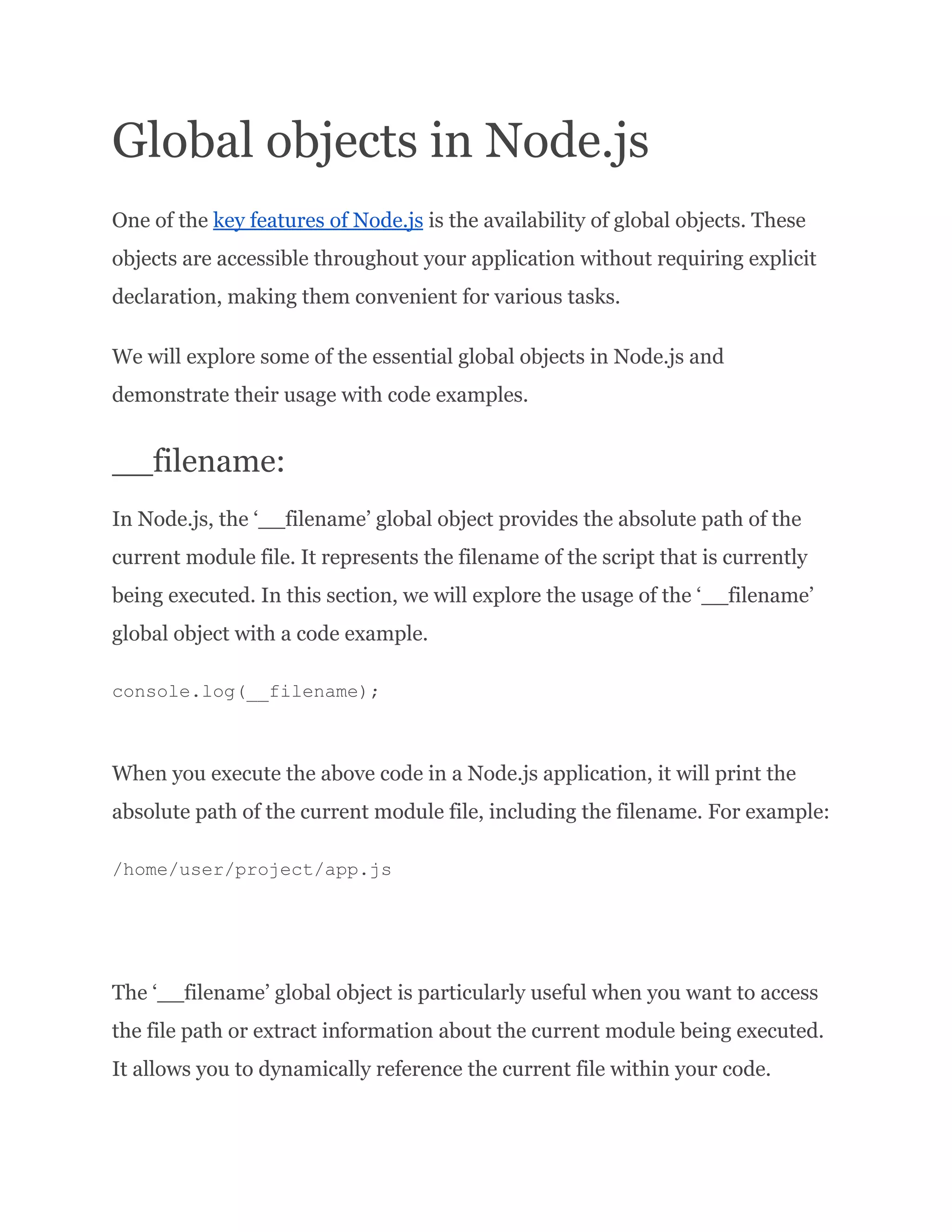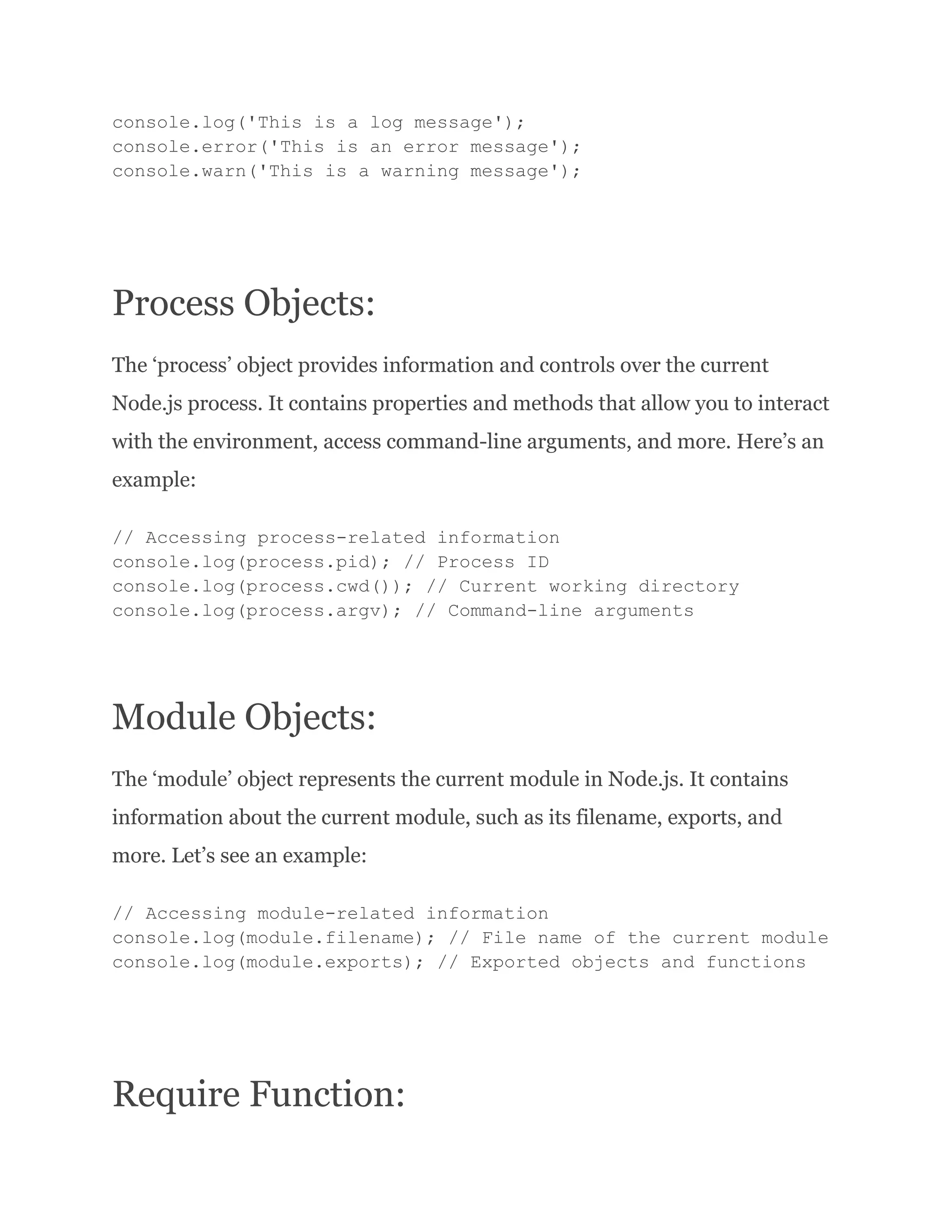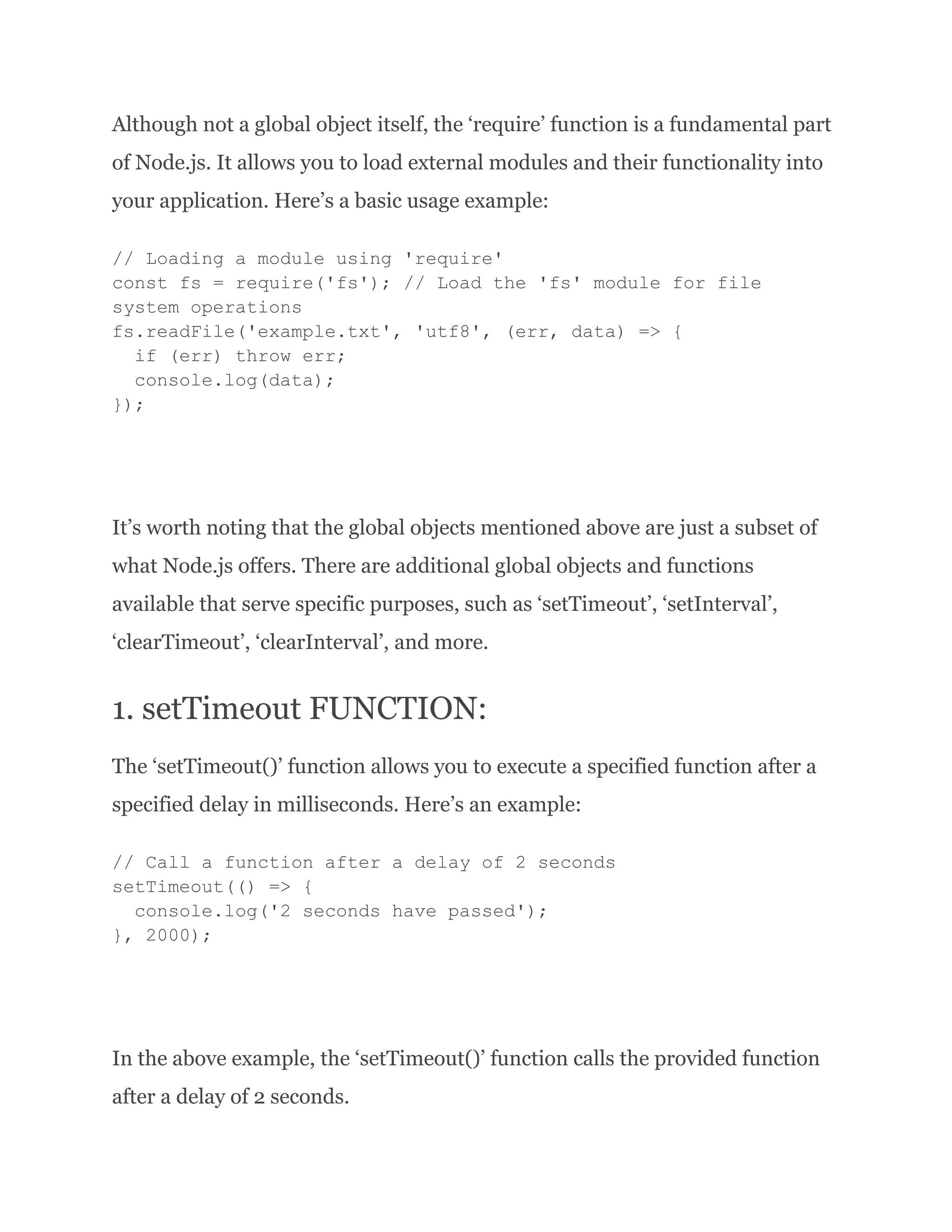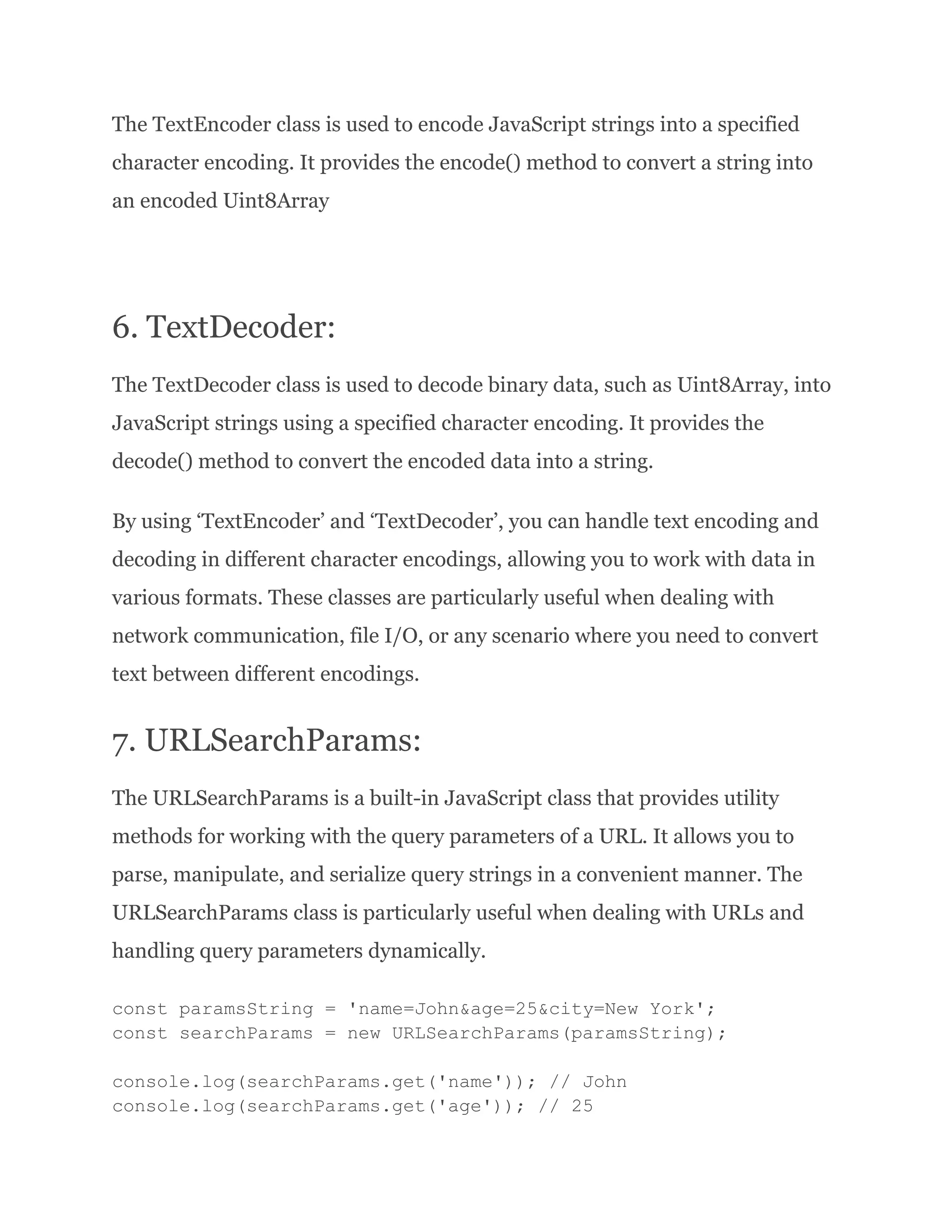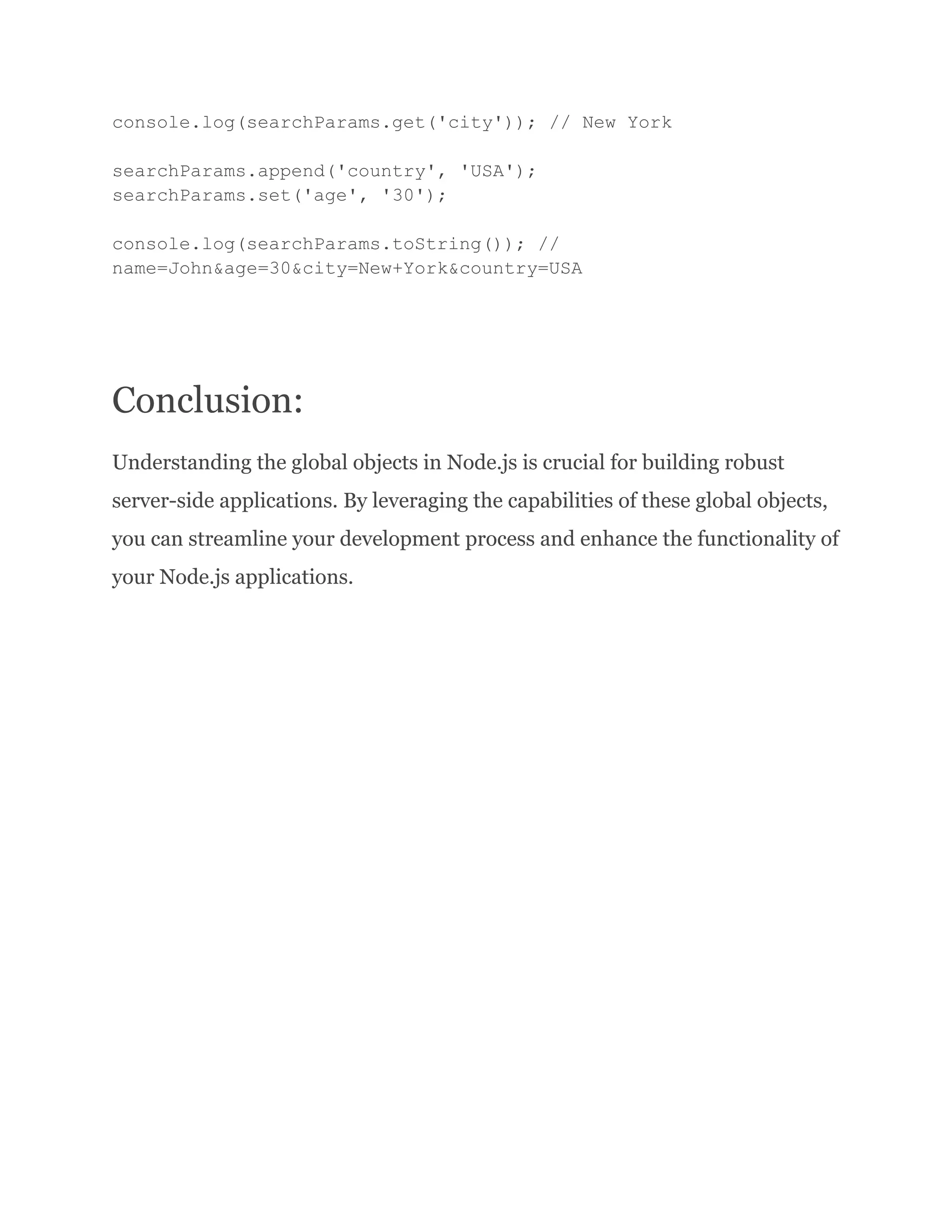Global objects in Node.js provide convenient access to commonly used functions and properties without requiring explicit declaration. Some key global objects include __filename and __dirname, which provide file path information, as well as console, process, module, and require, which enable logging, system interaction, and module loading. Additional global functions like setTimeout allow executing code after a delay. TextEncoder and TextDecoder help with text encoding, while URLSearchParams facilitates URL parameter handling. Mastering global objects is important for developing efficient Node.js applications.
